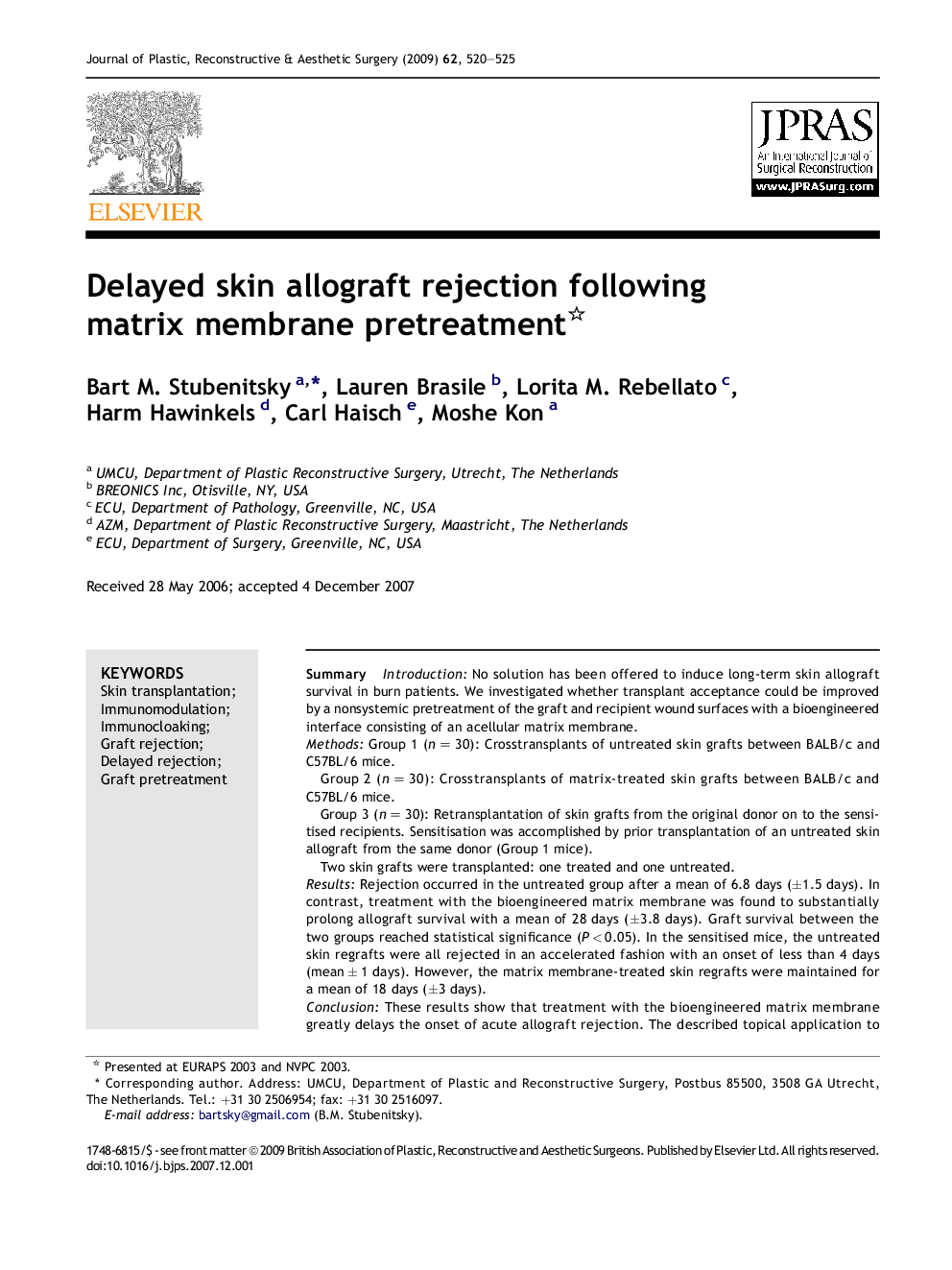| Article ID | Journal | Published Year | Pages | File Type |
|---|---|---|---|---|
| 4121847 | Journal of Plastic, Reconstructive & Aesthetic Surgery | 2009 | 6 Pages |
SummaryIntroductionNo solution has been offered to induce long-term skin allograft survival in burn patients. We investigated whether transplant acceptance could be improved by a nonsystemic pretreatment of the graft and recipient wound surfaces with a bioengineered interface consisting of an acellular matrix membrane.MethodsGroup 1 (n = 30): Crosstransplants of untreated skin grafts between BALB/c and C57BL/6 mice.Group 2 (n = 30): Crosstransplants of matrix-treated skin grafts between BALB/c and C57BL/6 mice.Group 3 (n = 30): Retransplantation of skin grafts from the original donor on to the sensitised recipients. Sensitisation was accomplished by prior transplantation of an untreated skin allograft from the same donor (Group 1 mice).Two skin grafts were transplanted: one treated and one untreated.ResultsRejection occurred in the untreated group after a mean of 6.8 days (±1.5 days). In contrast, treatment with the bioengineered matrix membrane was found to substantially prolong allograft survival with a mean of 28 days (±3.8 days). Graft survival between the two groups reached statistical significance (P < 0.05). In the sensitised mice, the untreated skin regrafts were all rejected in an accelerated fashion with an onset of less than 4 days (mean ± 1 days). However, the matrix membrane-treated skin regrafts were maintained for a mean of 18 days (±3 days).ConclusionThese results show that treatment with the bioengineered matrix membrane greatly delays the onset of acute allograft rejection. The described topical application to the wound surfaces of both the graft and the recipient may offer a new and readily available source of wound coverage in patients with extensive burns.
